St Magnus Cathedral, Kirkwall, Orkney
St Magnus Cathedral dominates the skyline of Kirkwall and is a central part of Orcadian life. It occupies the centre of Kirkwall – the street opposite – Broad Street – is Kirkwall’s main shopping street and the location where the Ba is first thrown in the air on Christmas and New Year’s Day. The cathedral today is used for Church Services, funerals and weddings.
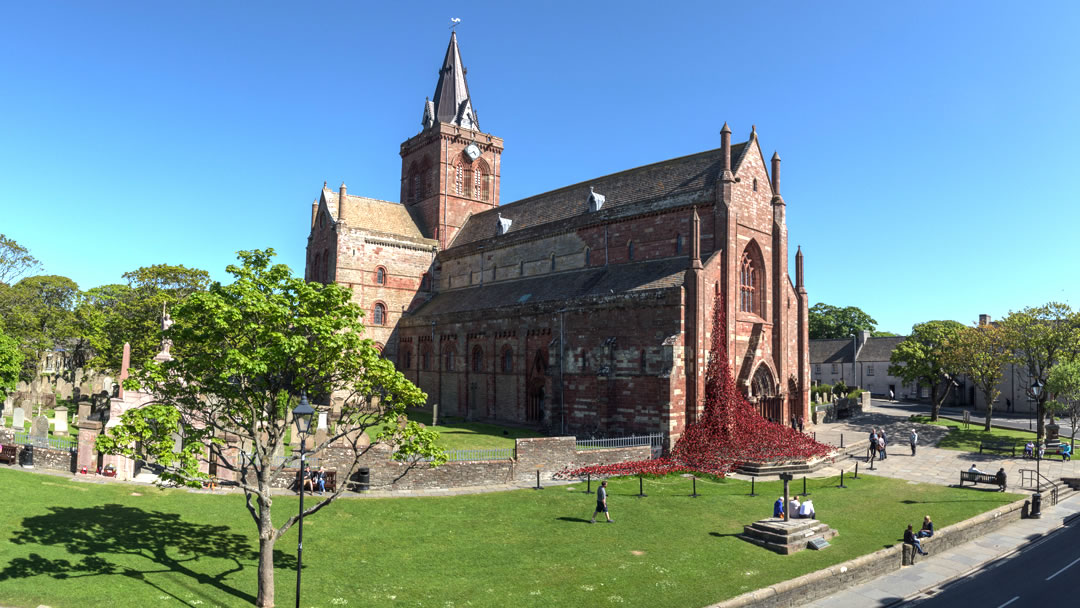
The Cathedral also hosts a number of concerts, recitals and musical performances throughout the year, including Mumford and Sons in 2011. It is a major venue at the world renowned St. Magnus Festival held each midsummer.
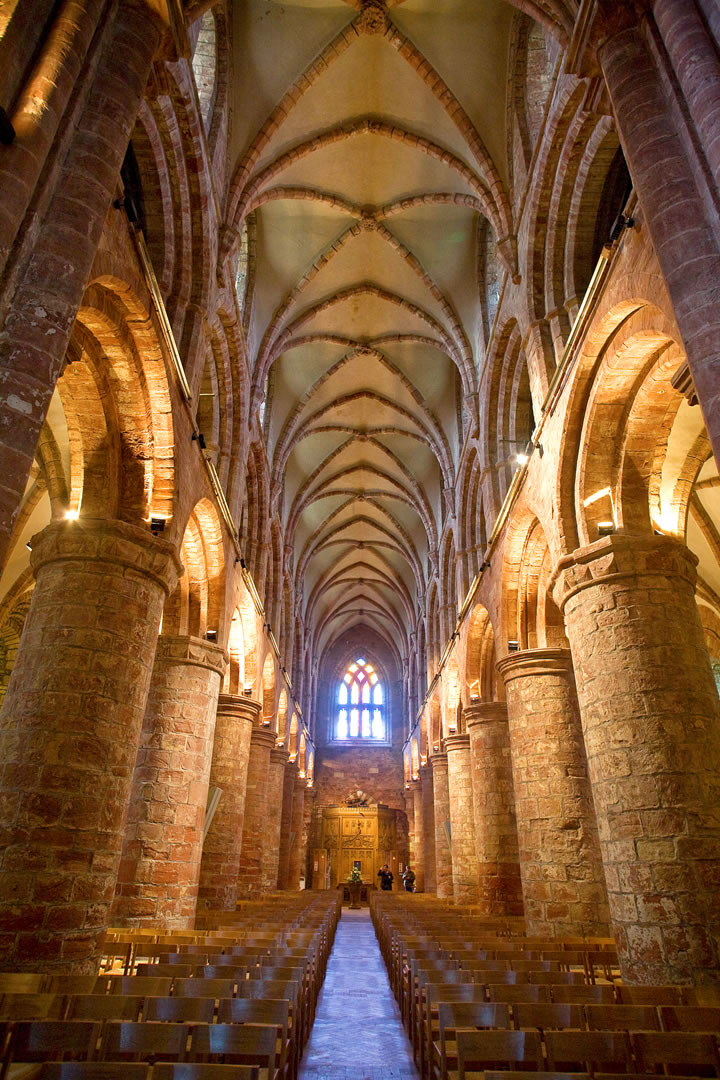
St Magnus himself was a Viking Earl, from a time when the Orkney and Shetland islands were ruled by the Norse Earls. Magnus had a reputation for piety and gentleness – he shared the earldom of Orkney with his cousin Håkon, and they ruled amicably as joint Earls of Orkney from 1105 to 1114. However, their followers fell out and they prepared to do battle on the Orkney Mainland. Peace was negotiated and the Earls arranged to meet on the small island of Egilsay, each bringing only two ships. Magnus arrived on 16 April 1115 with two ships, but Håkon turned up with eight. After capture, Magnus was executed by Håkon’s cook, who struck him on the head with an axe.
Magnus was buried at Birsay and the rocky area around his grave miraculously became a green field, and there were numerous reports of miraculous happenings and healings. In 1135 Magnus was canonised, with 16 April becoming St. Magnus’ day.
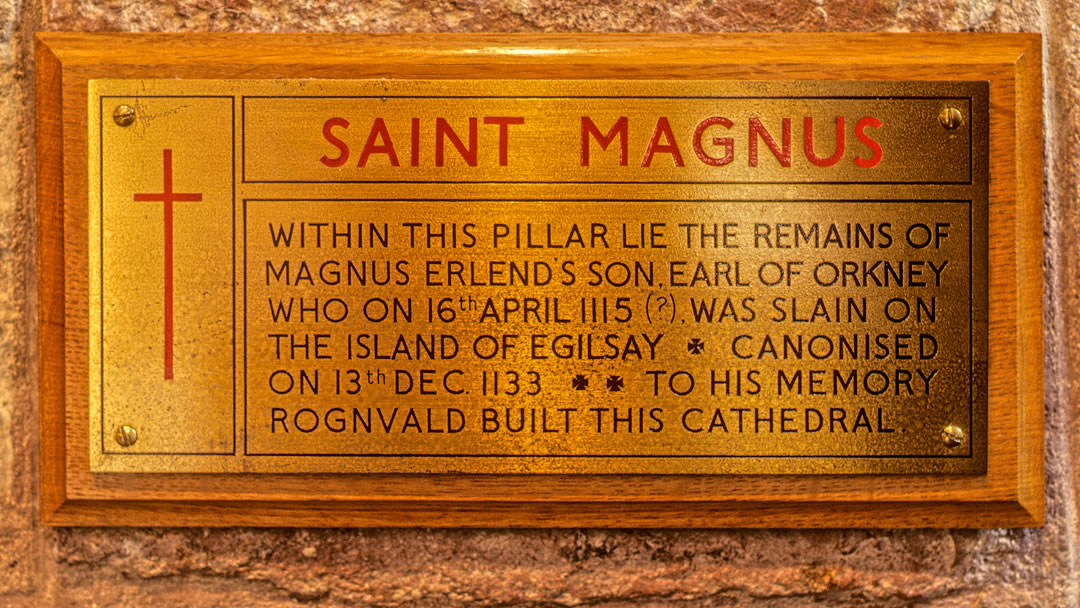
The son of Magnus’s sister, was granted earldom of Orkney in 1129 and he promised the islanders a magnificent Church dedicated to his uncle. Its construction commenced in 1137 and he supervised the earliest stages of the building during the bishopric of William the Old of Orkney (1102 – 1168) It was added to over the next three hundred years. When the Cathedral was ready for consecration the relics of St. Magnus were enshrined in it. In 1917 a hidden cavity in a column was found, containing a box with bones including a skull showing a wound consistent with a blow from an axe.
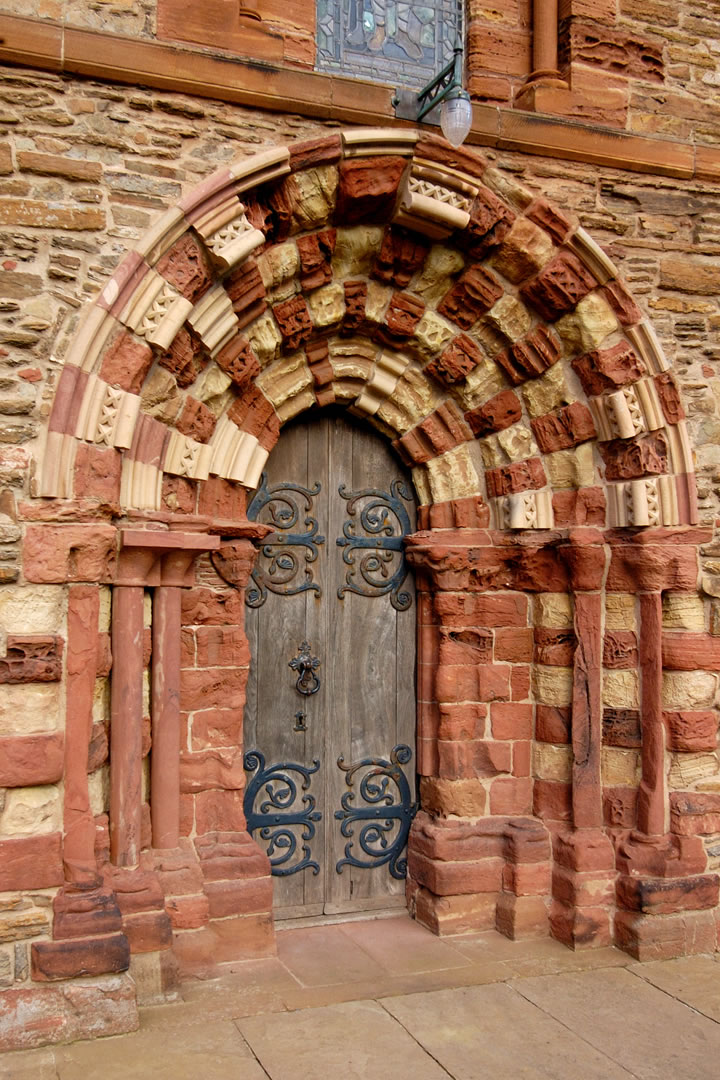
Between 1154 and 1472, Orkney was ecclesiastically under the Norwegian archbishop of Nidaros (Trondheim) and after that it became part of the Scottish province of St. Andrews. The Cathedral was assigned to the inhabitants of Kirkwall by King James III of Scotland in a charter dated 1486.
The Reformation brought ruin to many cathedrals but St. Magnus Cathedral seems to have emerged relatively unscathed, although many of its treasures were removed and the wall decorations were covered in whitewash. The church had a narrow escape in 1614 when Government forces, suppressing a rebellion, had besieged and destroyed Kirkwall Castle and intended to destroy St. Magnus Cathedral after rebels had hidden inside. The Bishop of the day intervened to prevent them for carrying out this plan.
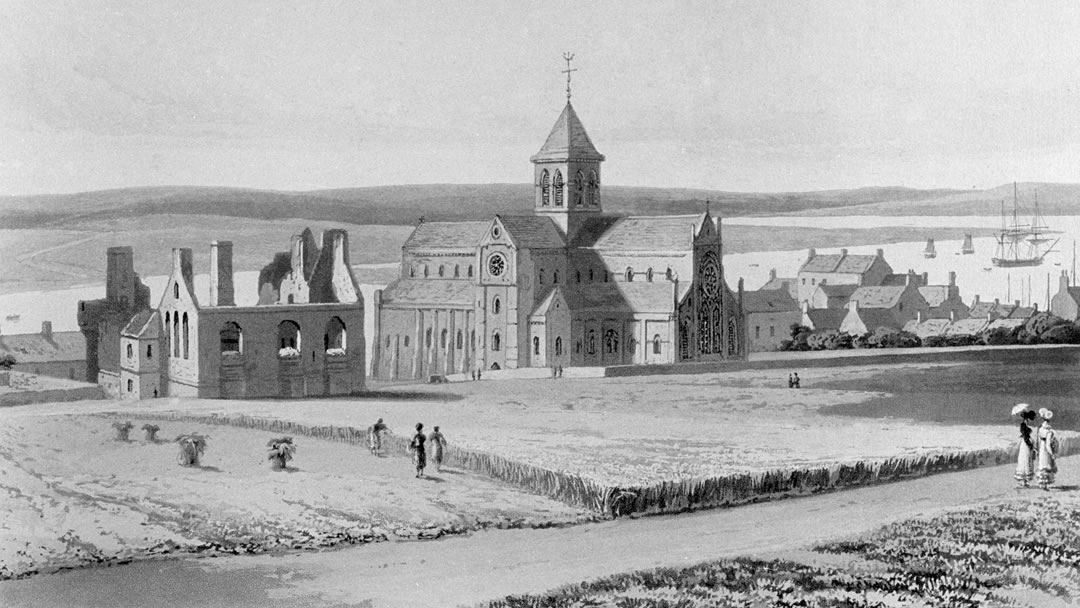
Today, St Magnus Cathedral is very similar to how it was during the time of the Vikings. Major changes include the tall spire clothed in copper sheeting which replaced a dumpy slated pyramid atop the tower and the addition of stained glass windows.
The architecture is fascinating – the masonry uses red sandstone quarried from the Head of Holland, Kirkwall and yellow sandstone from the island of Eday, often in alternating courses or in a chequerboard pattern to give a polychrome effect. The great age of much of its structure means it has smaller windows than those found in more modern churches, and St Magnus Cathedral has its very own dungeon!
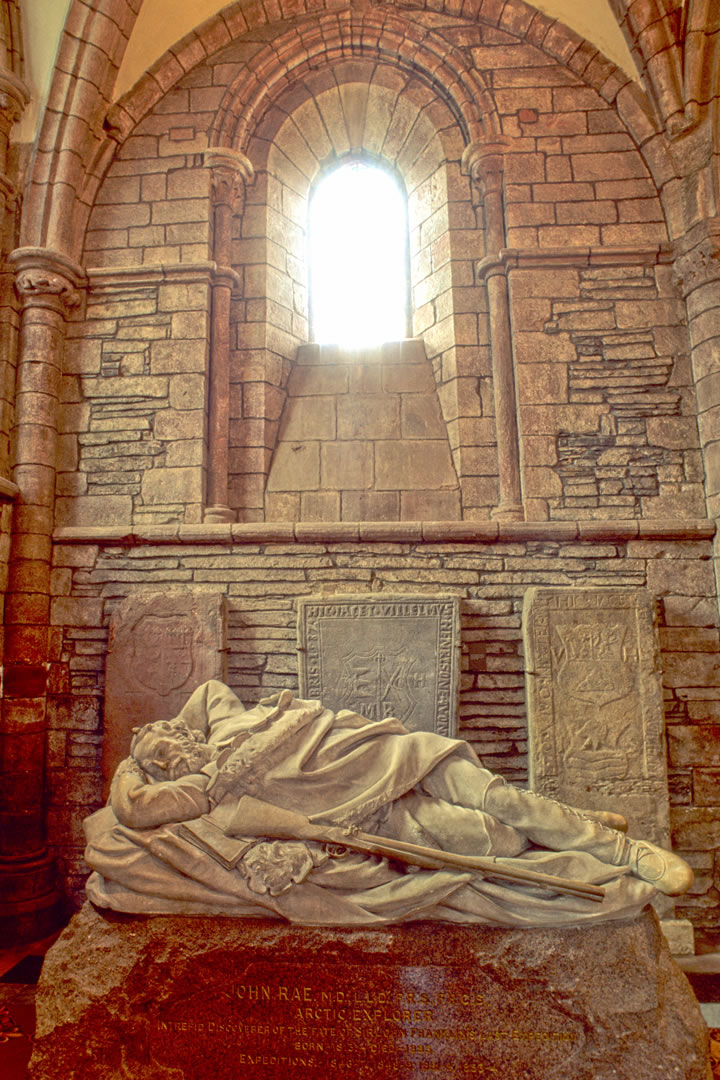
Visitors can gain greater appreciation of the intricacies, the open spaces and the height of the Cathedral by joining guided group tours of the tower and upper parts of the building.
The cathedral now contains memorials to many prominent Orcadians including explorers William Balfour Baikie and Dr John Rae, writers Eric Linklater, George Mackay Brown and Edwin Muir, artist Stanley Cursiter and psychiatrist Sir Thomas Clouston.
